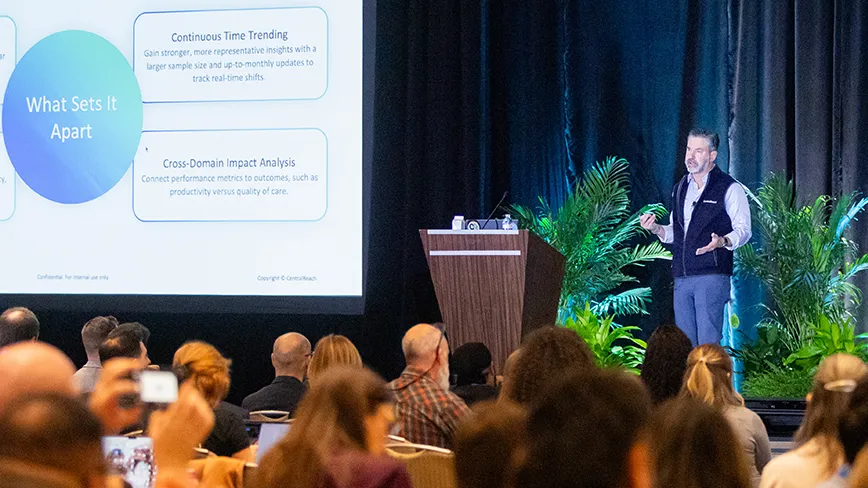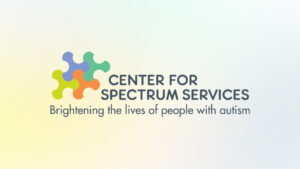If you are a behavioral health practitioner seeking the best Applied Behavior Analysis (ABA) data collection methods, you have arrived at the right place. This blog was devised to serve as a guide into all things ABA data collection and covers a wide range of areas including but not limited to:
- What is ABA Data Collection?
- Common ABA Data Collection Methods you can utilize
- The difference between Continuous vs. Discontinuous Measurement
- How to select the right Applied Behavior Analysis Data Collection Method for you
- Autism & IDD Care Software
Now, let's dive in!
What is ABA data collection?
ABA data collection includes gathering clinical data that informs the direction of ABA therapy, client outcomes, critical success measures, the effectiveness of client-therapist relationships, and overall progress toward practice goals. It allows ABA therapists to spot red flags, note areas of improvement, and mark critical performance indicators. Data is necessary in determining and supporting clinical and business decisions – which is why it's so important to identify effective methods for data collection.
Commonly utilized ABA data collection methods
When determining which ABA data collection methods to employ at your practice, remember that the behavioral health industry is shifting. According to a 2022 CentralReach report[1], digital data collection has become the norm among ABA practices, with approximately 50% or more practices utilizing digital methods in 2021. That said, several different data collection approaches facilitate different ways to convey clinical information. We've outlined the most common methods below.
1. Duration Recording
Duration recording is a data collection approach best suited for tracking and documenting client behaviors that have a distinct beginning and ending or that occur at a high frequency. This method documents how long a client engages in a particular behavior, typically by using a stopwatch or other timing instrument to measure the length of the behavior.
2. Latency Recording
Latency recording measures the time it takes for a client to respond to a verbal directive or instruction. It also utilizes a timing instrument and requires that an expected behavior has a clear beginning in order to determine precisely when the behavior starts.
3. Permanent Product
Permanent product recording looks at the concrete objects and/or outcomes that result from a behavior to determine, track, and monitor both beneficial and harmful behaviors. For example, counting completed homework assignments or the number of missed/uncompleted homework assignments to measure a client's engagement and progress.
4. Frequency/Event & Rate Recording
Frequency/event recording measures how many times a specified behavior occurs within a certain time frame. Similarly, rate recording looks at the rate at which a behavior occurs if the time frame varies, such as three times per minute or per hour.
5. Rating Scale Data
A behavior rating scale allows behavior to be tracked and rated on a continuum. It requires a clear definition of the target behavior, the best scale for measuring that behavior, and an identification of the anchor points of the scale (i.e., what the behavior occurrence looks like on a typical day vs. the goal that has been set for the client to achieve).
6. Per Opportunity Recording
With per-opportunity recording, data is collected around how often a target behavior occurs when the client is given the opportunity to perform it. Thus, the opportunity to perform the target behavior is the central measurement tool.
7. Task Analysis
Task analysis involves breaking down a complex task into smaller, more digestible steps or actions to aid in the learning and performance of a task. Data collected from task analysis and subsequent task performance can emphasize strengths and areas of improvement.
8. Antecedent-Behavior-Consequence Data
The Antecedent-Behavior-Consequence (ABC) method defines the stimuli or activity that occurs before a certain behavior, the behavior that follows the antecedent, and the event or consequence that follows that behavior. This approach can aid in identifying the root cause of a behavior to better inform treatment plans.
9. Scatterplot Analysis
Scatterplot analysis is an effective way to track and then visualize patterns of behavior in a client. By narrowing down certain behaviors of concern, ABA therapists can observe and collect occurrences of those behaviors across a timetable to spot strengths and challenges.
10. Interval Recording
Interval recording is when an observation period is broken into parts to assess behavior at different intervals and includes both partial interval and whole interval recording. Partial interval recording assesses whether a behavior occurs at all during an interval. Whole interval recording looks at whether a behavior occurred by the end of the whole interval. These methods can be utilized to help increase or decrease behaviors depending on the goals of the client.
11. Time Sampling
Time sampling involves dividing an observation period into intervals to record the presence or absence of a behavior either within or at the end of the interval. Different methods fall under the category of time sampling, such as partial interval recording or momentary time sampling.
Continuous vs. Discontinuous Measurement methods in ABA data collection
Within ABA data collection, practitioners can choose to follow continuous or discontinuous measurement methods. Be sure to consider both when determining the most effective storytelling approach for the client's needs and goals. Here are brief descriptions of both.
‣ What is Continuous Measurement?
Continuous measurement documents each occurrence of the behavior, including previously discussed methods -- e.g., frequency, rate, duration, and latency. Continuous data collection utilizes basic dimensions to closely and accurately detect behavior trends and changes. When a complete record of behavior is needed, this approach provides the most comprehensive data story.
‣ What is Discontinuous Measurement?
Discontinuous measurement, on the other hand, breaks an observation period into smaller increments of time to look at a sample of behavior that occurs during those increments. It includes previously mentioned methods such as partial interval recording, whole interval recording, and momentary time sampling. Though this approach has more potential to lack accuracy, it is ideal for busy environments when time is of the essence.
How to Select the Best ABA Data Collection Method
Now that you've become more acquainted with the ins and outs of various ABA data collection methods – how do you choose which method to apply in practice?
We've provided a few key steps to outline a clear action plan.
‣ Establish the Desired Outcome
First, establish the desired outcome. What story are you trying to capture through data collection? What do you hope to come away with at each data collection stage? Once you define the desired outcome, you can better map a clear direction toward that vision.
‣ Identify overall pros and cons for each method based on your desired outcome
Suppose your desired outcome is to obtain a clear picture of behavioral trends and patterns. If so, continuous measurement methods may be the best choice -- but you may have to factor in extra session time. Weigh both sides to determine the most appropriate path.
‣ Select a method that fosters social validity and does not impede progress
Whichever method you choose, ensure it has social validity and positively contributes to client goals. The procedures, goals, and outcomes you carry out in your sessions should be appropriate and accepted as valid measures.
A closing note
A client’s progress and outcomes are dependent on the data you collect. Both areas suffer when you are unable to capture the type(s) of data you need, in the format you need it, and in a seamless, simple manner. You might consider utilizing autism & IID care software to help with data collection. After reading this blog, we hope you have become more aware of the different data collection methods and techniques available to you. Don’t restrict your own treatment delivery or client progress by depending solely on methods you are familiar with. Exploring them all opens new doors for you and your clients.






